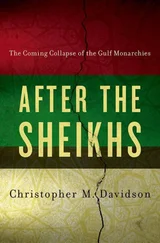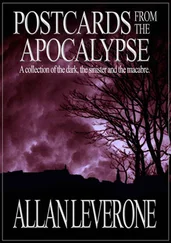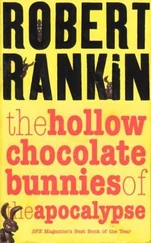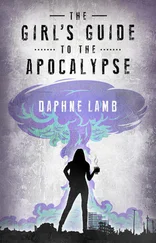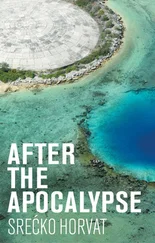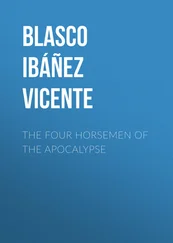He wrote down the info on the psoriasis study.
“What is that?” I asked.
“It’s a skin problem,” he said. “Your skin gets dry and flaky.”
That sounded vaguely possible, although mostly my skin is too oily. “My feet get that way,” I said. “Would that be enough?”
“To be psoriasis?” he said. “Probably not. But you don’t have to have psoriasis to be in the study. They need healthy people for comparison. Tell Lisa you want on the list.”
I did. She asked me about my psoriasis and I told her I didn’t have it. She nodded and put me down. Two weeks later I got called to be in the control group.
And that was my first medical study.
Psoriasis studies are pretty good. I got one hundred and fifty dollars to put cream on and be examined once a week for twelve weeks. Fifty dollars a month toward what I owed Uncle Jim helped a lot.
I got a job in a catering hall as a cook and left the Clinic, but I kept doing medical studies. A study on asthma got me enough to cover the deposit on an apartment. Which was good, because Donna had met Ted, and they were talking marriage, and they sure didn’t need me around the apartment. She graduated from nursing school and one November day, as I walked from the parking garage at the Clinic, I realized that I had lived in Cleveland for three years. The wind cut between the buildings the way it always does. The streets were a mess of slush. I was looking for a study so I could save money for a trip to Cancun in February.
The idea for the trip had started in the fall, when I called Sarah, who had been my maid of honor, and she told me Chris was getting married again. I knew I shouldn’t care, but I wasn’t even seeing a guy. Not that I wanted Chris. And I had a great life. Good friends. Four of us were going—two girls I worked with and another friend I had met at Weight Watchers. Weight Watchers hadn’t been much of a success for me or for Melinda, but we started going out to movies and hanging out. We call ourselves the Fat Fab Four. Mel started it, and she really is Fab. She wears jeans and skirts, and I can remember her taking off like four hundred silver bracelets to get weighed. I love her style. Everybody had heard the story of how I didn’t get to go to Cancun on my honeymoon. Mel had a friend who was a travel agent, and she got us a great deal—seven days, all inclusive, for fourteen hundred dollars apiece. So it was the Fat Fab Four Not-A-Honeymoon Vacation.
Lisa was still working the desk. She said, “Hi, Kayla, I haven’t seen you for a while.” I hadn’t done a study for ages. I could still use the money, but I’d been busy with the FF4.
I studied the list, but nothing looked good. Some things I just won’t do. Anything that looks like it will hurt. I did a burn cream study once where they actually gave me a little burn on my butt. Hurt like hell. So now I’m more careful.
I was frowning.
Lisa said, “What about the pulmonary study?”
I shook my head. “I’m going out of town.” The pulmonary study required that I be available for four months. The whole point of doing a study was to help pay for Cancun, not cancel it.
“This just came in,” Lisa said. “Have you ever done a Phase 1 drug trial?”
I had done some drug trials, but they were all for stuff like psoriasis and the burn study. This paid two thousand dollars. It was for a leukemia drug. I’d never done something where you had to take a serious drug. But two thousand dollars was a lot. The whole trip, and spending money. They only wanted twelve people.
She handed me the fact sheet. It had all the usual warnings. This drug is untested on humans … risk …
Normally I wouldn’t have done anything like this. But the chance to make two thousand dollars seemed too good to pass up. Like it was almost fate, you know? I don’t know that I believe in fate, especially now, but it seemed that way at the time. So I signed up.
The trial was on a Thursday afternoon. To get the day off I had to swap with someone else, which meant working a double on
Saturday—wedding in the morning, and another wedding in the
evening. At least in the evening I’d be doing bar, which wasn’t so bad. Handing out glasses of wine and beer to happy drunken wedding guests.
Thursday I went to a medical lab out on Cedar Road.
The Cleveland Clinic has three zones, and it’s all about patients. The front zone where the patients first see the hospital—the lobbies and the doctors’ offices—is really nice. Nice carpeting, nice wood, nice chairs and tables. Plants. Artwork. Then there’s the middle zone, places like the surgical staging areas and the hospital rooms. The hospital rooms try to be nice, but they have to have all this equipment and it’s not like television. It’s kind of cluttered and busy, and there will be stacks of blankets, boxes of latex gloves. Everything feels a little crowded. There’s no art on the walls of the ER or the outpatient staging and recovery areas.
Then there’s the back zone. Maintenance and the kitchen, offices and the places where the actual technicians do the lab work. Basements and closets. Hard light or not enough light. Notices and memos stuck on the wall. “Employees Must Wash Hands Before Returning to Work”; “Mandatory Meeting on Health Coverage Changes”; Waste Stock tracking sheets. That was the kind of place where the drug trial took place.
It was a pretty large room with no windows and a linoleum floor. It had one of those long folding tables like you see in a school cafeteria. On the table were vials and cotton swabs, syringes and gloves. A nurse was sitting in a folding chair reading a paperback.
There were ten of us, all guys except for me and one other woman. A lab tech checked us off on a clipboard, and we all had a packet sitting on a plastic chair. “Please sit in the chair with your packet,” the guy with the clipboard said. “The dosages have been calculated based on your weight, and if you sit in someone else’s chair, that could compromise the study.” Then he came to each of us and asked us our name and our birthdate and gave us each a hospital bracelet with all that and an ID number on it. He explained how we would be asked the same thing again before receiving the injection, and that was just to make sure that there were no slip-ups.
Then he explained about double-blind trials. No one in this room, he explained, knew which of us were getting the drug for testing and which were getting the placebo, which was just an injection of saline. He explained phase one testing. The point of this test, he explained, was not to determine if the drug worked, but just to confirm that it was safe for people. This drug, the one we were getting, had been extensively tested on rabbits and monkeys. Rabbits and monkeys, of course, could not report adverse affects, so we were to report any adverse affects we experienced. We would be getting a much smaller dose than the rabbits and monkeys.
I was the second person in the line of chairs. The guy sitting next to me was wearing a plaid shirt and thermal undershirt and work boots. He looked like he did construction. “Have you ever done this before?” I asked.
He nodded. “I’ve done two others, but they didn’t pay as good as this.”
A nurse came and asked him his name, date of birth, and ID number. She took a blood sample from him and then wrote his ID number on a label and stuck it on. Then she did the same thing to me.
As she moved down the chairs, I looked in my packet. The drug we were taking didn’t have a real name. It was just called GNT1146. It was for leukemia, lupus, and MS. Which, I will tell you, made me feel a little glad. It’s hard to think you’re doing much for humanity when you’re getting paid to not have psoriasis in a psoriasis study. But what if this drug really cured people with MS? I said that to the guy in the flannel shirt.
Читать дальше

